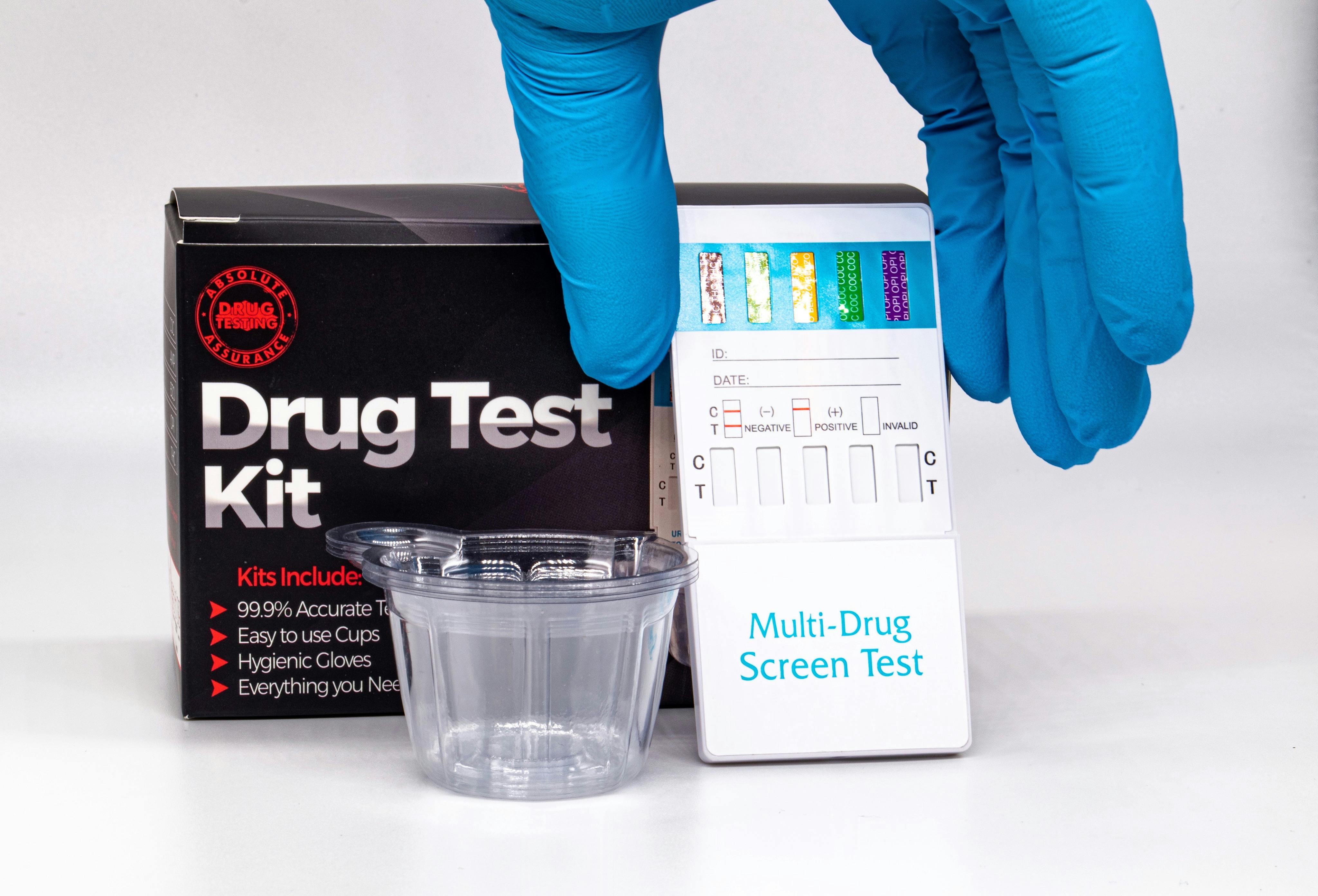How "Random" is Your Company's Random Drug Testing?

Strong 8k brings an ultra-HD IPTV experience to your living room and your pocket.
The phrase "random drug testing" has become a familiar fixture in employee handbooks across industries. Companies implement these programs citing workplace safety, productivity, and liability concerns. But beneath the surface of these seemingly straightforward policies lies a complex web of methodologies, legal considerations, and ethical questions. Many employees subjected to their company's Corporate Medical Test protocols wonder just how "random" these tests truly are. This article explores the mechanisms behind workplace drug testing programs, their effectiveness, and the factors that determine their randomness—or lack thereof.
The Science and Systems Behind Corporate Drug Testing
When companies include drug testing as part of their Corporate Medical Packages, they typically employ one of several systematic approaches to determine which employees will be tested and when. These systems range from truly random selection algorithms to more targeted approaches that may not be as random as advertised.
True randomness in selection means that every employee has an equal probability of being chosen for testing on any given day, regardless of their testing history, position, or performance record. This is typically achieved through computer-generated selection processes using random number generators that correspond to employee identification numbers.
However, many companies adopt a pseudo-random approach—one that appears random to employees but follows certain patterns or weights. For example, some testing protocols might:
• Ensure that all employees are tested at least once within a certain time frame
• Apply different testing frequencies to different departments, particularly those in safety-sensitive positions.
• Implement "for cause" testing that may be triggered by certain workplace incidents or behavioural observations.
• Conduct periodic testing that occurs at regular intervals but on unpredictable dates.
The distinction between truly random and pseudo-random selection processes is rarely transparent to employees, creating an atmosphere where testing can feel arbitrary, targeted, or inconsistent.
Legal Frameworks and Limitations
Drug testing in the workplace operates within a complex legal framework that varies significantly by location. In the United States, federal regulations mandate testing for certain industries such as transportation, defence, and nuclear energy. Outside these mandated sectors, private employers generally have considerable discretion in implementing drug testing programs, though they must navigate a patchwork of state and local regulations.
These legal frameworks typically require:
• Consistent application of policies across similar employee groups.
• Advance notice of drug testing policies.
• Confidentiality of test results.
• Chain of custody procedures for test samples.
• Confirmation testing for positive results.
What many employees do not realise is that legal requirements often shape the "randomness" of their company's testing protocol. For instance, Department of Transportation regulations specify that companies must test a certain percentage of their safety-sensitive workforce annually. This requirement often results in selection systems designed to meet compliance quotas rather than achieve truly random sampling.
The Reality Behind Random Selection
Research into corporate drug testing programs reveals that many "random" programs aren't random at all. Several factors commonly influence who gets tested and when:
• Risk-Based Selection: Many companies weight their selection algorithms toward employees in positions deemed higher risk. While this approach makes logical sense from a safety perspective, it means that employees in these roles face disproportionate testing frequencies.
• Return-to-Duty Testing: Employees with previous positive test results or who have completed rehabilitation programs often face heightened scrutiny and increased testing frequency. While this follow-up is standard practice in many programs, it fundamentally alters the randomness of selection for these individuals.
• Suspicious Behaviour Triggers: Despite policies claiming purely random selection, supervisors in many organisations can flag employees for testing based on observed behaviour or performance issues. These "reasonable suspicion" tests, while necessary in many contexts, create a selection system that factors in subjective human judgment.
• Testing Clusters: Administrative convenience often leads companies to conduct testing in clusters—testing multiple employees on the same day from the same department. This practice, while logistically efficient, can create perceptions of targeting specific groups.
The Effectiveness Question
The effectiveness of workplace drug testing remains a subject of ongoing debate. Proponents argue that testing serves as a deterrent, reducing substance use among employees and creating safer workplaces. Critics contend that standard testing protocols often fail to identify impairment at work, instead flagging off-duty substance use that may not affect workplace performance.
The limitations of standard drug testing methodologies contribute to this effectiveness gap. Most tests can detect substance use days or even weeks after impairment has passed. This temporal disconnect means that someone who used substances responsibly during off-hours might test positive, while an employee who came to work impaired but has not used substances in several days might test negative.
Moreover, standard panels test for a limited range of substances and can miss many drugs of abuse. The rise of synthetic drugs and prescription medication misuse presents challenges that many testing programs haven't adequately addressed. This intolerance toward certain substances while overlooking others creates inconsistencies in enforcement and effectiveness.
The Employee Perspective
For employees, the experience of random drug testing often feels anything but random. Psychological research demonstrates that humans naturally seek patterns, even when none exist. When an employee is selected for testing multiple times in a short period while colleagues seem to escape scrutiny, perceptions of targeting or discrimination can emerge—regardless of whether the selection was truly random.
These perceptions matter. When employees believe testing is unfair or arbitrary, workplace morale and trust in management can suffer. Companies rarely communicate the specific methodologies behind their selection processes, citing the need to prevent employees from gaming the system, but this opacity can fuel speculation and distrust.
The concept of an Intolerance Test within the workplace extends beyond substance testing to how organisations handle the process itself. Companies that implement testing with dignity, transparency about the process (if not the specific selection timing), and clear communication about the rationale behind testing typically experience better employee relations around their testing programs.
Balancing Fairness and Effectiveness
Organisations seeking to implement truly fair and effective drug testing programs must navigate several considerations:
Statistical Randomness: Truly random selection requires sound statistical methodology. Companies should employ selection systems that ensure equal probability of selection while meeting compliance requirements.
Consistent Application: Policies must be applied consistently across similar employee groups. Even when different testing frequencies are justified by job requirements, these distinctions should be clearly communicated and consistently implemented.
• Documentation and Transparency: While specific testing dates cannot be announced in advance, the methodology behind selection should be documented and available for review. This transparency helps build trust in the fairness of the system.
• Focus on Impairment: Progressive organisations are shifting their focus from detecting past substance use to identifying current impairment that affects workplace safety and performance. New technologies like performance testing offer promising alternatives to traditional chemical testing.
The Future of Workplace Drug Testing
As attitudes toward certain substances evolve—particularly with the legalisation of cannabis in many jurisdictions—workplace drug testing faces a reckoning. Companies must balance safety concerns with changing social norms and legal frameworks.
The most forward-thinking organisations are moving toward more holistic approaches that focus on impairment rather than substance detection. These approaches include:
• Performance testing that measures cognitive function and reaction time.
• Computer-based impairment detection programs.
• Comprehensive fitness-for-duty assessments.
• Robust employee assistance programs that address substance use disorders as health concerns rather than disciplinary issues.
These emerging methodologies allow organisations to maintain workplace safety while respecting employee privacy and acknowledging the limitations of traditional drug testing programs.
Conclusion: The Randomness of Random Drug Testing
The randomness of corporate drug testing programs exists on a spectrum, influenced by legal requirements, administrative considerations, and company culture. While truly random selection systems exist, many programs incorporate weighted factors that make certain employees more likely to be tested than others.
For employees questioning the randomness of their company's testing program, understanding these nuances can provide context for their experiences. For employers, recognising the importance of perceived fairness alongside actual procedural fairness can help create testing programs that maintain safety while preserving workplace trust.
As workplace drug testing continues to evolve, the balance between detection, deterrence, and dignity will determine whether these programs serve their intended purpose or create unnecessary friction in the employer-employee relationship. The most successful programs will be those that maintain necessary vigilance while respecting the complex realities of human behaviour both in and outside the workplace.
Note: IndiBlogHub features both user-submitted and editorial content. We do not verify third-party contributions. Read our Disclaimer and Privacy Policyfor details.







